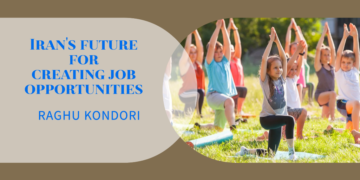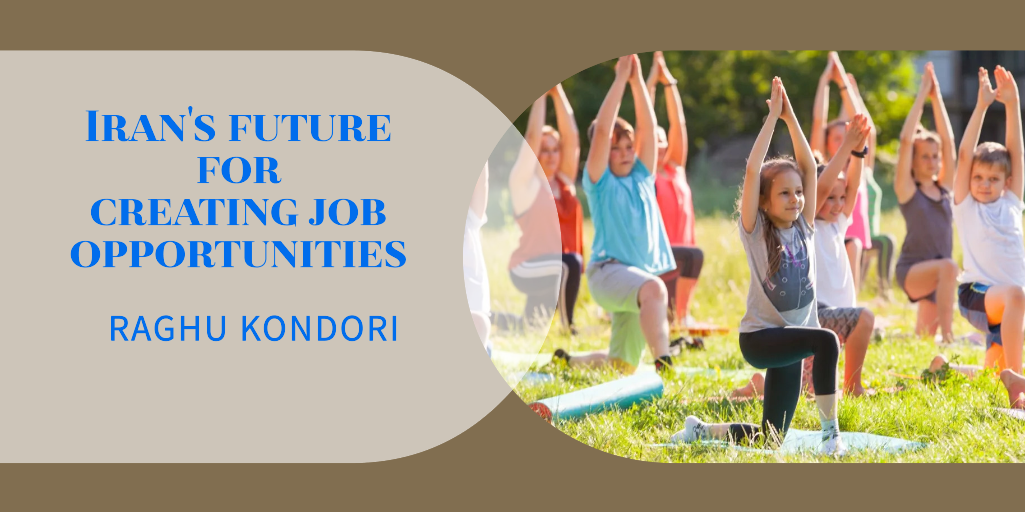Iran’s future for creating job opportunities

King Reza Pahlavi:
The future of Iranian democracy requires investing in children’s education and creating enthusiasm in the youth.

Harmonizing minds and shaping the future of Iran and creating job opportunities:
King Reza Pahlavi: The future of Iranian democracy requires investing in children’s education and creating enthusiasm in the youth.
13 years in India:
Having lived in India for 13 years, I studied and practiced yoga, witnessing its positive impact in schools. Yoga promotes harmony between body and mind, leading to better focus and a healthier lifestyle. This, in turn, can help reduce violence in schools, families, society, and even prisons.
The Transformative Power of Yoga in School Education:
“Unveiling the Holistic Benefits and Societal Implications of Integrating Yoga into Morning School Curricula”
In recent years, the integration of yoga into school curricula as a morning program has gained significant attention due to its potential to foster holistic development among children. This initiative holds the promise of yielding positive outcomes not only for individual students but also for families, society, and the job market.
Historical and Philosophical Foundations:
The practice of yoga dates back thousands of years to ancient India. Rooted in spiritual and philosophical traditions, yoga was initially developed as a means to achieve self-awareness, mental clarity, and physical well-being. Over time, it evolved into a comprehensive system that encompasses physical postures (asanas), breath control (pranayama), meditation, and ethical principles.
The practice of yoga, with its roots in ancient India, encompasses a rich history and philosophical underpinnings. Evolving over millennia, yoga originally aimed to achieve harmony between mind, body, and spirit. It emphasizes self-awareness, self-discipline, and the pursuit of inner peace. Incorporating these principles into school curricula introduces students to timeless wisdom that can guide their personal growth.
Psychological Development and Emotional Well-being:
The modern school environment often exposes students to various stressors, including academic pressures and social challenges. Integrating yoga into schools acknowledges the importance of emotional well-being alongside academic achievement. Through practices like mindfulness and meditation, students can develop emotional resilience, self-regulation, and coping mechanisms. These psychological tools not only enhance their academic performance but also prepare them for the complexities of adult life.
Yoga offers psychological benefits that align with our interest in psychology. By providing students with techniques to manage stress and emotions, it equips them with essential life skills that contribute to their overall well-being.
Physical Health and Holistic Well-being:
The physical component of yoga, including postures (asanas) and breathing techniques (pranayama), contributes to overall health. Regular practice enhances flexibility, strength, and posture. Moreover, pranayama techniques promote efficient oxygenation, which positively affects both physical vitality and cognitive functioning. By cultivating physical well-being from a young age, students are more likely to adopt healthy lifestyles as adults, reducing the risk of chronic illnesses.
The physical benefits of yoga are intricately connected to holistic well-being. As you’re interested in health and wellness of your children, the integration of yoga into schools aligns with your passion for promoting for your child a healthy habit and preventing health issues.
Cognitive Benefits and Academic Performance:
Research indicates that yoga and mindfulness practices enhance cognitive functions such as attention, memory, and problem-solving skills. As schools integrate yoga into their routines, students may experience improved focus, better information retention, and enhanced critical thinking abilities. These cognitive advantages can translate into higher academic performance and a more enriching learning experience.
The cognitive benefits of yoga tie into wellness and enhancing students’ cognitive abilities through yoga aligns with your pursuit of healthy life for optimal learning and personal growth.
Social and Cultural Understanding:
Yoga’s integration in schools can also serve as a bridge to understanding different cultures. By learning about its historical and cultural significance, students can develop cultural sensitivity and a broader worldview. This aligns with our interest learn a different culture, as it promotes intercultural communication and appreciation.
Through yoga, students can learn about cultural diversity and develop empathy for different traditions, contributing to a more inclusive society.
Family and Society:
The benefits of introducing yoga into schools extend beyond the classroom. When children learn about yoga, they often share their experiences and knowledge with their families. This can lead to the adoption of healthier lifestyles within households, including practicing yoga together. As a result, families become more attuned to their physical and mental well-being, fostering a supportive and nurturing environment.
The family-oriented benefits of yoga align with our interest in sociology and culture. By promoting healthy practices within families, yoga contributes to stronger family bonds and healthier societal norms.
Community Building:
The practice of yoga can extend its influence to the broader community. Schools that offer yoga programs might host workshops, events, or classes that involve parents, teachers, and local residents. These gatherings not only promote community bonding but also provide a platform for sharing knowledge about well-being and stress management.
The community-building aspect of yoga can be a catalyst for community interactions and discussions about well-being, fostering a sense of belonging.
Employment Opportunities:
When considering the potential employment opportunities that the integration of yoga in schools can create. As the demand for yoga instructors grows, schools might collaborate with local yoga studios or wellness centers to provide certified instructors. This not only adds a new dimension to the school’s offerings but also generates job opportunities for qualified yoga practitioners.
By foreseeing the employment potential, schools can strategically contribute to the wellness industry while supporting job creation.
Incorporating yoga into schools as a morning program is a commendable initiative with far-reaching positive implications. As an advocate for holistic education, I believe that nurturing a child’s physical, emotional, and mental well-being is essential for their overall growth. By providing students with the tools to navigate challenges, build resilience, and enhance cognitive skills, yoga equips them to thrive in both academic and personal spheres.
Moreover, the ripple effects of yoga in schools contribute to the creation of a healthier and more mindful society. Families benefit from shared practices, fostering stronger bonds and healthier habits. The community at large benefits from enhanced well-being and greater cultural understanding, ultimately promoting harmony and cohesion.
Additionally, the potential for job creation through certified yoga instructors showcases the strategic dimension of this initiative. By aligning educational goals with wellness objectives, schools can respond to societal needs while simultaneously offering employment opportunities to skilled professionals.
In conclusion, the incorporation of yoga as a morning program in schools holds immense potential to transform the educational landscape and societal well-being. As we continue to prioritize holistic development, the integration of yoga stands as a beacon of hope, guiding future generations towards healthier, more balanced lives. I believe that the integration of yoga into schools represents a progressive step towards holistic education. The convergence of ancient wisdom and modern educational goals holds the promise of nurturing well-rounded individuals who are equipped to thrive in a dynamic world. By prioritizing emotional intelligence, physical well-being, and cultural awareness, schools can mold students into compassionate, adaptable, and culturally sensitive individuals.
Furthermore, the potential for yoga to permeate families and communities underscores its transformative power. The adoption of healthy habits and the promotion of intergenerational well-being reflect a societal shift towards holistic living. This not only aligns with our interests in sociology and culture but also echoes the strategic importance of investing in the long-term welfare of individuals and communities.
In conclusion, the integration of yoga into schools as a morning program is a progressive initiative with profound implications. By addressing the diverse needs of students—psychological, physical, cognitive, and cultural—schools pave the way for a brighter future. This endeavor aligns with our interests and values, as it blends history, psychology, sociology and culture, to create a comprehensive framework for nurturing the next generation. As we envision a society that values well-being alongside academic excellence, the integration of yoga stands as a beacon of hope and positive transformation.
Raghu Kondori
Shah Homeland Freedom™ #ShahHomelandFreedom™
Shah Patrie Liberté™ #ShahPatrieLiberté™
™شاه میهن آزادی™ #شاه_میهن_آزادی
Copyright © 2023-2025 Raghu Kondori. All Rights Reserved.

